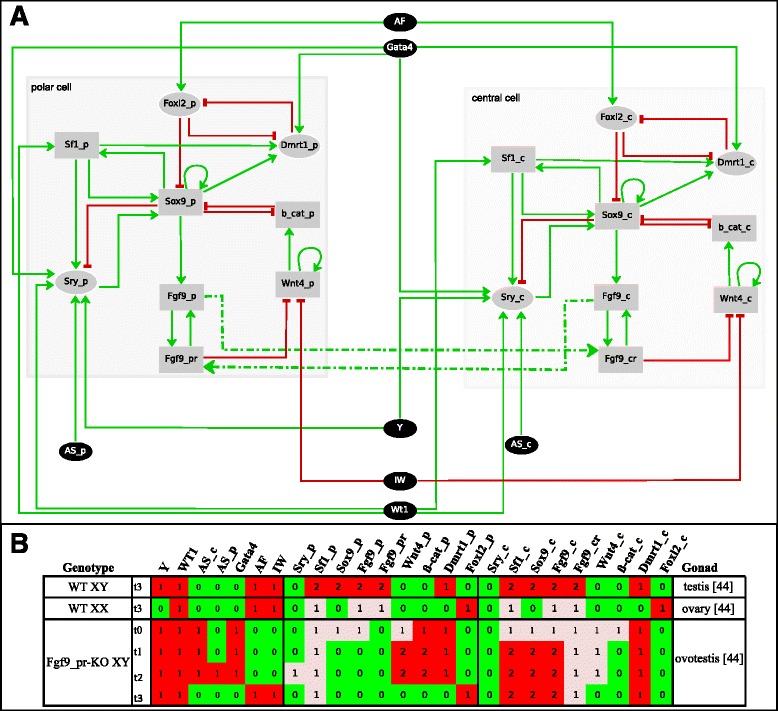Fig. 4.

Spatio-temporal induction pattern of Sertoli cells during the development of the bi-potential XY gonad into testis. a The 2-cell network represents the central (“c”) and pole (“p”) regions of the gonad; the suffixes “cr” and “pr” indicate the Fgf9 receptor of the central and pole cells, respectively. The dashed lines denote Fgf9 paracrine function. t0 stands for the bi-potential gonad initial state; t1 stands for the activation of Sry in the central region of the gonad; t2 stands for the activation of Sry in the pole regions of the gonad, and t3 stands for the maintenance state. For details see text and Additional file 1. b Final states reached by the 2-cell network and the corresponding phenotypes (testis, ovary and ovotestes) for the gonad under wild type and mutant conditions for the paracrine function of Fgf9. Remaining symbols and colour codes are given in the legend of Fig. 1
